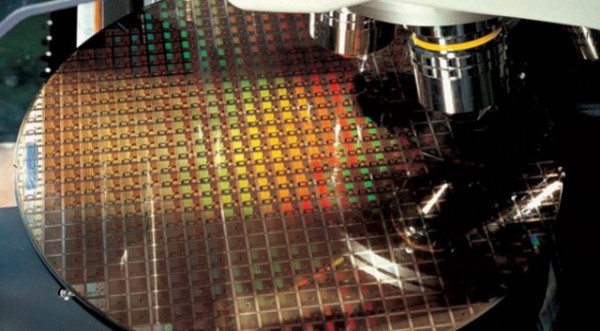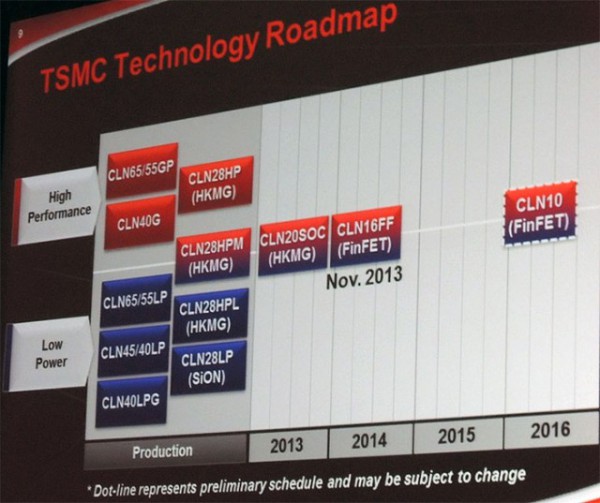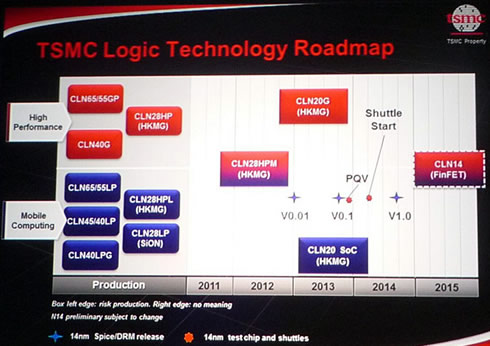TSMC quickly ramping up 16nm volume production

TSMC announced this week that it’s ramping up 16nmFF production at speed, and expects a smooth volume ramp through the next few months. This ramp announcement refers to the first of TSMC’s planned 16nm nodes, called 16nm FF. TSMC isn’t talking much about this node any longer, but apparently released this information to quell speculation that it lost orders for Apple’s iPhone to competition for Samsung. As we’ve previously covered, reports on who, exactly, wooed Tim Cook’s hand for next-generation foundry production is a matter of some debate. It’s entirely possible that Apple intends to dual-source both TSMC and Samsung for its processors, and has waited to determine exactly what the split will look like based on yield results and performance characteristics.
Previously, TSMC has said that its 16nmFF+ node won’t begin volume production until Q3, with wider availability expected in Q4 2015 or Q1 2016. This implies that the 16nmFF standard line will be very short-lived. TSMC decided to speed its push for a second-generation 16nm node after competitive information from both Intel and Samsung indicted that the company’s first-generation 16nm FF would be behind the eight ball as far as power consumption and overall performance.
Earlier rumors surrounding the node have suggested that 16nmFF+ might be better suited to higher power devices than 16nmFF, which would explain why Apple might be planning to tap it for the iPhone, while companies like AMD and Nvidia aren’t expected to release 16nm hardware until next year. AMD hasn’t confirmed that it will use TSMC for further GPU manufacturing, but both it and Team Green have historically done so. We’ve kicked around the idea of whether or not Samsung/GlobalFoundries might capture some of that business for the first time, but for now, it seems prudent to assume the cycle will continue. More details on Zen’s manufacturing should be available closer to its launch date.
As for how this will play out in the graphics card industry itself, we’d expect Nvidia to launch the next round of products (Pascal), followed by an AMD launch later in the year. Which company beats the other to the punch depends on a number of factors, but based on current product cadences, that’s the most likely scenario. A great deal is riding on how strong TSMC’s 16nmFF+ node actually is — if the foundry can’t deliver a substantially better product than Samsung has fielded, it could find itself locked out of substantial revenues at the 16/14nm node. This is part of why TSMC has been aggressively pushing 10nm. The company is used to leading at cutting-edge nodes and capturing the majority of the revenue from doing so. An aggressive 10nm ramp, if the company can pull it off, would put it neck-and-neck with Intel at that node.













